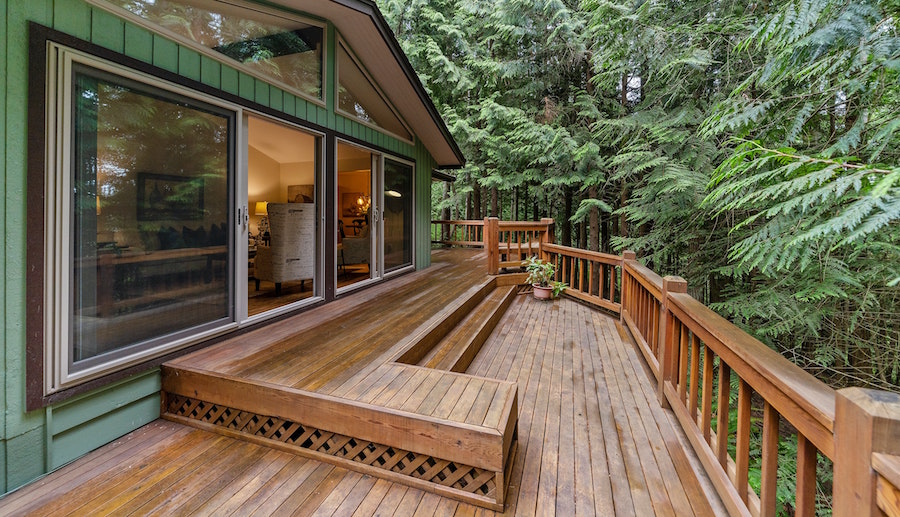
Is the deck of your BC home safe?
BC has been battered with rain, sleet and snow this month. While homeowners have taken precautions to protect against water ingress and damage to the inside of their home, there is one extension that is often forgotten – outdoor decks and patios. When left unprotected from the elements, wooden decks become susceptible to rot. This can lead to a number of liability concerns. Below we take a look at what those are along with steps homeowners can take to prevent them from happening.
Homeowners Insurance Risk of Outdoor Deck Rot
Injury and Damage from Collapse
When rot sets in the entire construction of your wooden deck is compromised. The foundation and silts will weaken, and the surface will also become uneven, unsteady, and may give under the weight of a BBQ or even more concerning – footsteps of those enjoying their time on your patio. Injury from outdoor deck collapse seems to make the news every year in BC. Over a year ago, the entire Township of Langley BC was sued along with property over a deck collapse that resulted in dozens of wedding guests being injured.
Expanding Outside-In
When left unchecked, wooden deck rot can grow from the exterior into the interior of your home. This may occur when your home’s exterior is made of wood with limited cladding (of another material) to prevent the rot, mold, and mildew from penetrating the insulation. Rot can also easily pass from the base of the deck into the foundation of the home, introducing mold and mildew into the basement. Once either occurs the risk to the health of occupants and the physical integrity of the home grows significantly.
How to Prevent Damage and Liability Risk of Deck Rot
Get Your Decks Inspected and Repaired (or Replaced)
Your deck’s initial construction must pass BC’s Building Codes and Standards. Search online for a reputable deck specialist near you to perform a comprehensive inspection. To begin with, they will make sure that your deck is built not only according to codes and standards, but that all of the right materials were used on construction. This is especially important when it comes to the lumber used to build your deck. In a ongoing court case of a wooden deck collapse, it was found that the wrong type of lumber for outdoor use was to blame along with poor upkeep. In BC, cedar, redwood, or pressure treated woods are preferred because of their durability and resistance to moisture. If the inspection uncovers that the wrong type of wood was used, you are best served in moving forward with a deck replacement over repair. The investment will pay off via the avoidance of an eventual collapse. Otherwise, the inspection will most likely result in a few smaller and low-cost (relative to risk) repairs and/or replacement of deck footing along with compromised pilings and deck boards.
Perform Regular Upkeep of Your Outdoor Deck
Beyond professional help, it’s up to you to maintain your outdoor deck to prevent damage and liability. If it can be shown that you were negligent in this capacity you may be deemed responsible for an injury to occupants and guests should the deck collapse or even cause a slip/trip and fall.
For starters, know what to look for. Signs of rot to wooden decks include the following:
- Darkened, lightened, or off-colored patches of wood
- Soft and spongy wood
- Cracked and crumbling wood
- Shrunken wood (noticeable by gaps in deck boards)
- A damp and musty smell emanating from the surface (get your nose close to the deck and sniff!)
- Damaged, flakey, or bubbled-looking paint
Review Your Homeowners Insurance
Contact Park Insurance today for an audit of your existing policies and to learn more about our comprehensive homeowners policies.